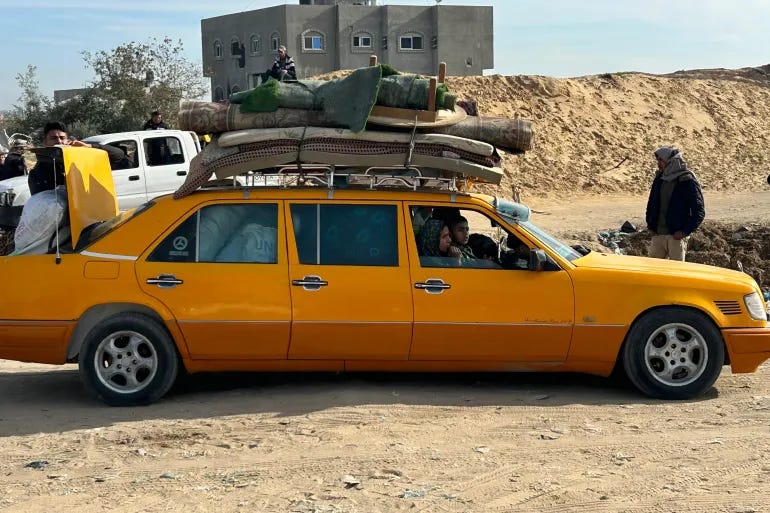Palestinians Return to Devastated Rafah Amid Ceasefire
As the Israel-Hamas ceasefire begins, families find southern Gaza’s Rafah city reduced to rubble.
Rafah, Gaza Strip, Palestine – Palestinian farmer Abd al-Sattari had long hoped that, when the war in Gaza ended, he could return to his homes in Rafah. For the past nine months, as Israeli forces invaded and devastated the southern city, Abd and his family had been displaced, living in a tent in al-Mawasi. He had hoped that if one of his houses was destroyed in the airstrikes, the other would survive to offer his family refuge.
But when he and his eldest son, Mohammed, returned to their properties before the ceasefire officially began on Sunday, they were met with heartbreaking devastation: both homes – one in Shaboura and the other in Mirage – had been completely leveled. His dreams of returning to normalcy had been shattered.
The long-awaited ceasefire, which began on Sunday morning, raised hopes for an end to the war that has claimed the lives of more than 46,900 Palestinians and forced over 2 million people into displacement. Despite the ongoing attacks just before the ceasefire, many families began returning to Rafah, eager to rebuild their lives. Some arrived on foot, others in vehicles, animal-drawn carts, or bicycles, carrying only a few belongings.
In the streets of Rafah, some families chanted in defiance: “We will rebuild. We will live.”
However, the city they returned to was nothing like the home they once knew. Abd surveyed the wreckage of his two properties, both reduced to piles of rubble. The visits to his brothers’ homes revealed similar destruction. His plans to reunite with his family in their old neighborhood crumbled, as the reality of a destroyed city became clear.
Over the phone, Abd informed his wife, who was waiting with their children in al-Mawasi, that their homes were uninhabitable. She wept on the other end of the line, pleading to return, but Abd insisted it was impossible. Their eldest son, Mohammed, reassured her that they would find a way to eventually return, but the loss was overwhelming.
"The Rafah we knew is gone," Abd said. "The streets where we grew up, the places we worked—they are now unrecognizable."
For Abd’s family of six, this was supposed to mark the end of their displacement, but instead, they face the grim task of rebuilding from nothing.
Nasim Abu Alwan, another resident who returned with his nine children to find their home destroyed, resolved to live among the ruins. “We’ll haul water from afar if we must,” Nasim declared. “We’re done with tents. We’re staying in Rafah, no matter what.”
According to United Nations reports, more than 60% of buildings and 65% of roads in Gaza have been destroyed since the war began on October 7, 2023. The scale of devastation has created a massive humanitarian crisis, with over 42 million tons of debris and countless hazardous materials like unexploded ordnance buried within it.
Rafah’s mayor, Mohammed al-Sufi, described the destruction as “staggering,” saying that 70% of the city’s infrastructure has been wiped out, including key areas like the Philadelphi Corridor, a vital border region with Egypt. Many parts of Rafah remain inaccessible, and municipal workers are urgently working to clear roads, restore water, and address the dangers posed by unexploded ordnance. However, authorities are urging caution, warning that a hasty return could be dangerous without basic services in place.
Despite the immense destruction, the people of Rafah remain resilient. "We’ve suffered too much in exile. Rafah is home, and we will rebuild – even if it takes a lifetime," one father said.


